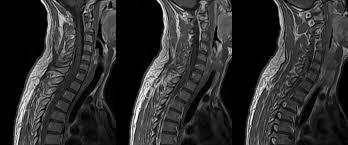NEWS
Intel's "smart spine" will save you from paralysis

The goal of the ambitious project is to create an autonomous implant that will give people with spinal cord injuries the ability to move and feel.
With serious spinal injuries, impulses from the brain cannot reach the muscles, which leads to paralysis. Unfortunately, the human body is not able to independently regenerate damaged nerve fibers. Intel is confident that the time has come to use modern technology.
Intel, together with researchers from Brown University, launched a two-year project to create an intelligent interface that will restore limb movement and control of the bladder after spinal injuries. The development will also be attended by doctors from the Rhode Island Hospital and Micro-Leads Medical employees who have developed high-precision spinal cord stimulation technology. Part of the funding will be provided by a DARPA grant of $ 6.3 million.
Intel will provide hardware and software for the project, as well as help create algorithms that decode nerve impulses.
AI will be the basis for special implants that will implant volunteers with spinal cord injuries. The device will pick up motor and sensor signals and transmit them bypassing the damaged area.




